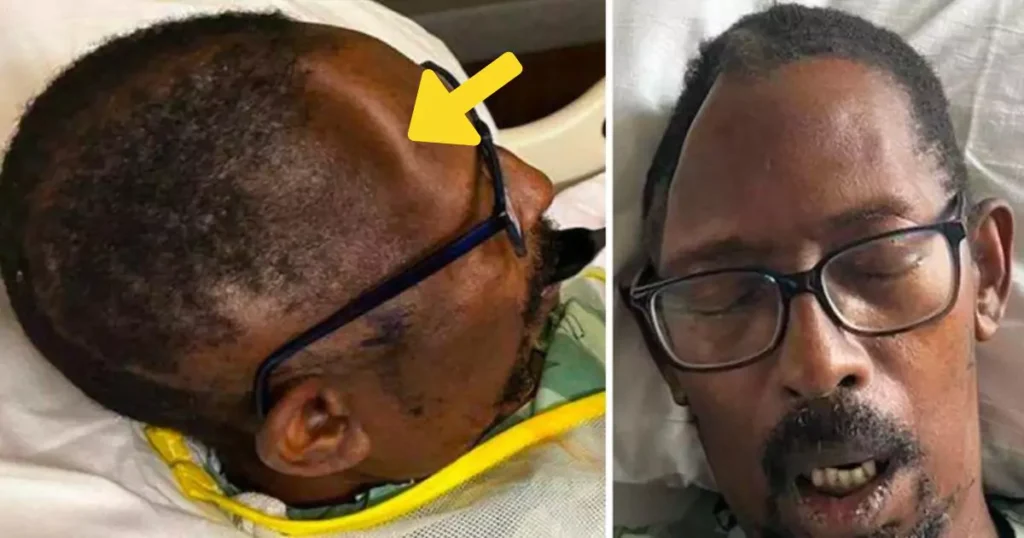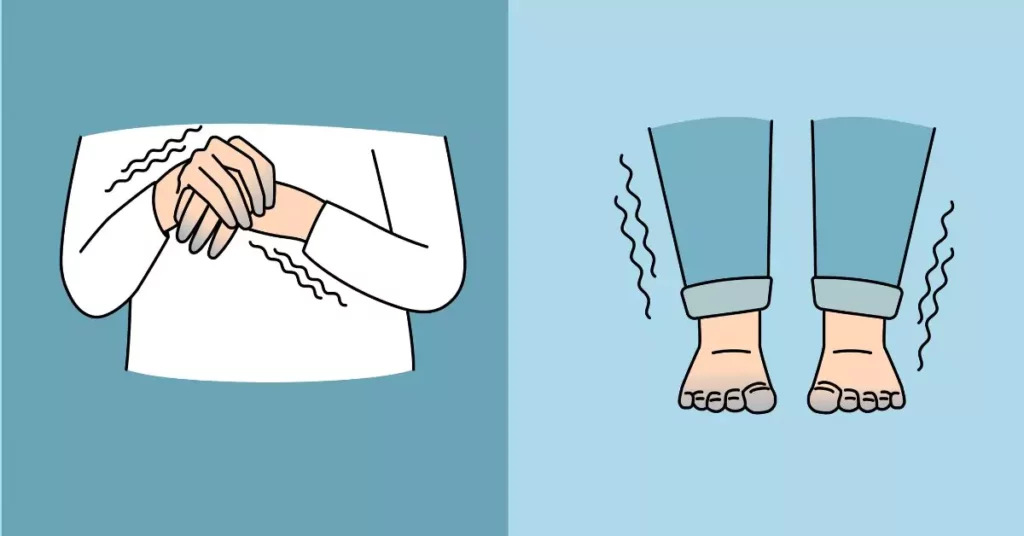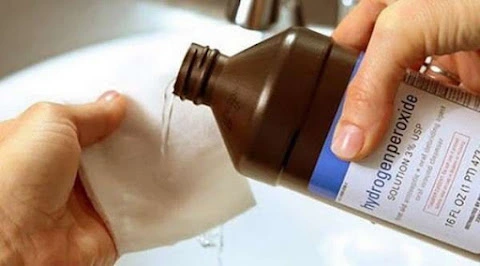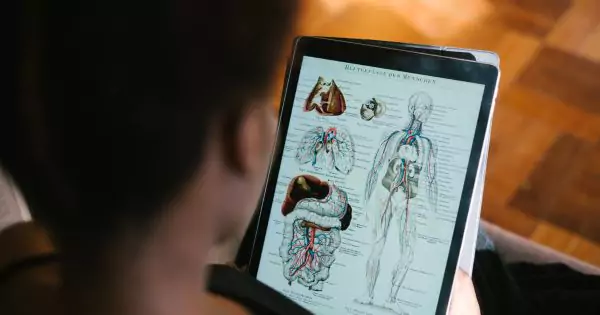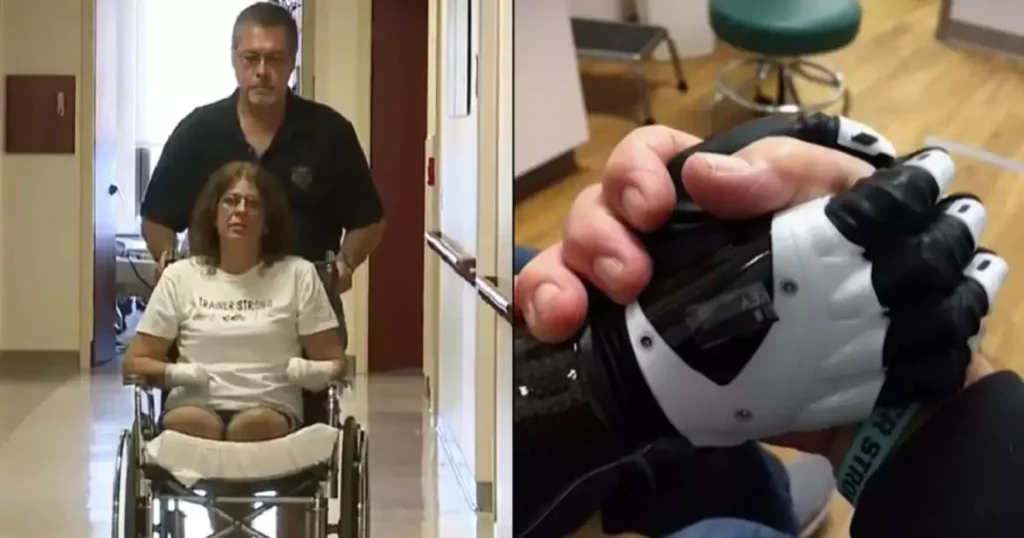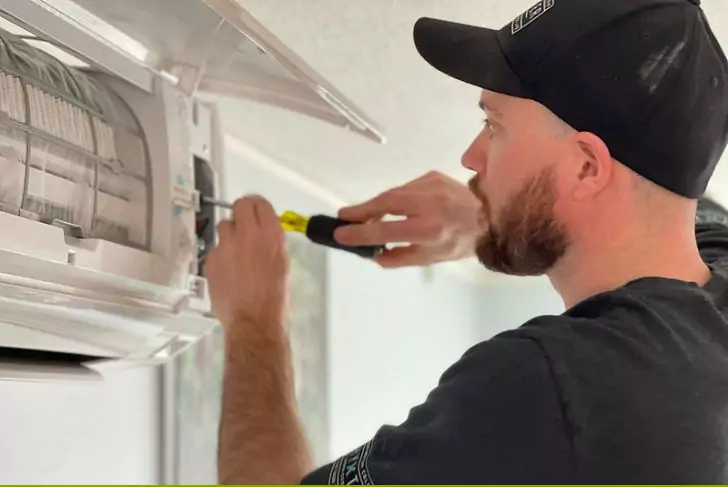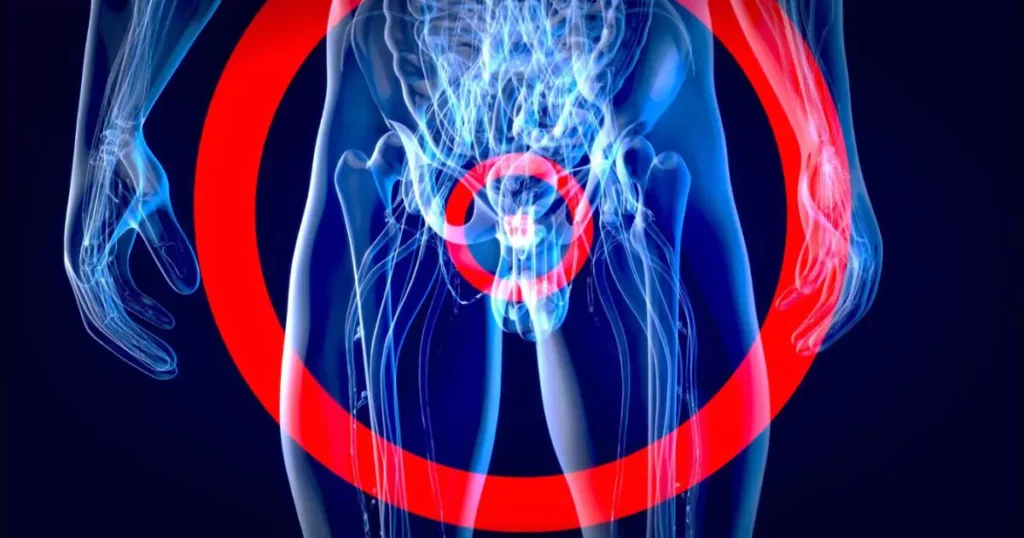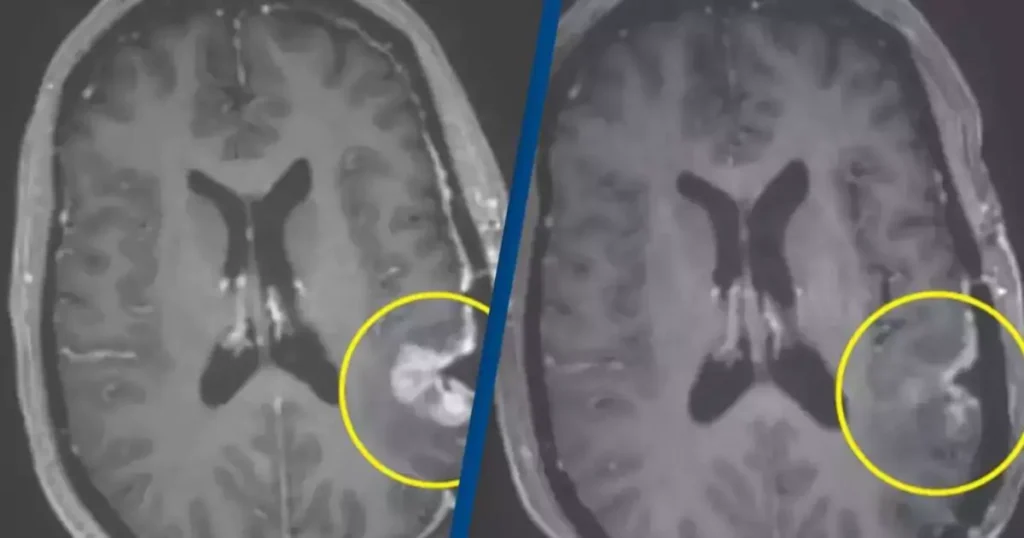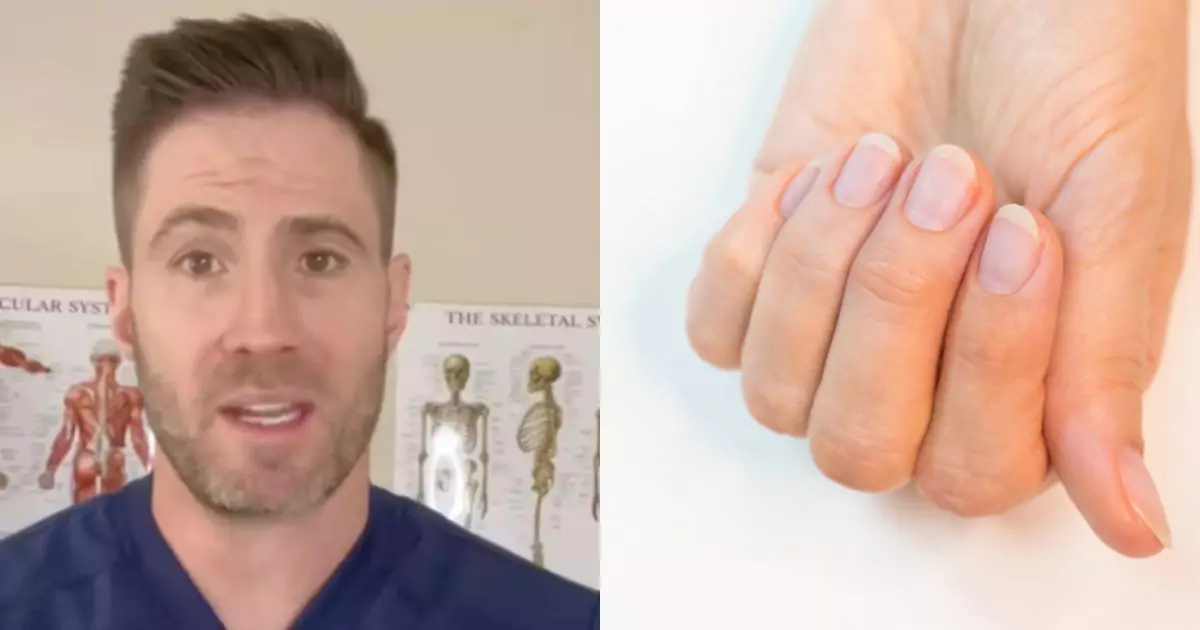
Your body often sends subtle signs when something isn’t right, and while most people pay attention to obvious symptoms, there are lesser-known details that can reveal underlying health problems. One such indicator is a small detail in your fingernail, which could point to a serious heart condition that puts you at risk for sudden death. A US-based emergency response doctor, Dr. Joe, has taken to TikTok, where he has over two million followers, to warn people about the importance of noticing these seemingly harmless signs.
What Is Quincke’s Sign?
Dr. Joe highlights the presence of a red pulsation in your fingernails when pressed, known as Quincke’s sign, which may be a signal of aortic regurgitation, a heart condition that occurs when the heart’s aortic valve doesn’t close properly. When this happens, blood that should flow out to the body leaks back into the heart, causing it to work harder to pump blood efficiently.
This seemingly minor detail—a red pulsation when you press on your fingernail—could be a significant indicator of a heart problem that needs immediate attention.

How Aortic Regurgitation Affects Your Heart
Aortic regurgitation is when the aortic valve, which connects the left ventricle of the heart to the aorta (the largest artery in the body), fails to close tightly. This results in blood flowing backward into the left ventricle instead of out into the body. The heart compensates by working harder, which can lead to heart enlargement, heart failure, and eventually sudden death if left untreated.
Dr. Joe explains that the pulsation, also known as Quincke’s pulse, is a visible sign of this backflow of blood. The condition not only stresses the heart but also reduces the amount of blood and oxygen reaching the rest of the body, leading to several other health problems.
Symptoms to Watch For
In addition to Quincke’s sign, people with aortic regurgitation may experience various symptoms, some of which are common while others are more severe. Common symptoms include:
- Shortness of breath (especially during physical activity)
- Fatigue and general weakness
- Irregular heartbeat or palpitations
- Dizziness or fainting spells
- Swollen ankles and feet
- Chest pain (in severe cases)
These symptoms are often mistaken for other less serious conditions, making it crucial to consult a healthcare professional if you experience any of them, especially in combination with the red pulsation in your fingernail.
@drjoe_md Quincke’s sign is a physical sign seen in people with aortic regurgitation, a heart condition where blood flows back into the heart instead of moving forward. It shows up as a pulsing in the nail beds when gentle pressure is applied to the fingernail. This happens because the heart’s valves are not working properly, causing stronger pulses in the arteries. It’s one of the clues doctors use to help diagnose this heart issue. #cardiology #aorticvalve #heartmurmur #medicalstudent #medicalresident #premed ♬ original sound – Dr. Joe, M.D. 🩺
Risk Factors for Aortic Regurgitation
Certain individuals are more at risk for developing aortic regurgitation. The condition is more common in men and typically develops between the ages of 40 and 60. However, age is not the only factor. Several other risk factors include:
- High blood pressure
- Congenital heart defects (present from birth)
- Rheumatic fever (a complication of strep throat)
- Endocarditis (infection of the heart valves)
- Trauma or injury to the chest
It’s estimated that about 1 in 20 people suffer from some degree of aortic regurgitation, but only 1 in 200 will develop the more serious form of the condition. This makes early detection critical in preventing the escalation of the disease.
Preventive Measures and Precautions
While there’s no guaranteed way to prevent aortic regurgitation, there are steps you can take to reduce your risk of developing heart problems in general. These include:
- Regular check-ups: See your doctor for routine cardiovascular screenings, especially if you have a family history of heart disease or are in a high-risk group.
- Control blood pressure: High blood pressure can exacerbate aortic regurgitation. Make sure to manage your blood pressure through diet, exercise, and medication if necessary.
- Maintain a healthy weight: Obesity puts extra strain on the heart and can worsen conditions like aortic regurgitation.
- Quit smoking: Smoking is a major risk factor for heart disease and damages the blood vessels, making it harder for your heart to function properly.
- Exercise regularly: Cardiovascular exercise strengthens your heart and improves blood circulation. Aim for at least 150 minutes of moderate aerobic activity each week.
- Eat a heart-healthy diet: Focus on consuming plenty of fruits, vegetables, whole grains, and lean proteins, and reduce your intake of saturated fats, trans fats, and processed foods.
- Monitor cholesterol levels: High cholesterol can lead to atherosclerosis (narrowing of the arteries), which increases the risk of heart valve issues.
- Avoid excessive alcohol consumption: Heavy drinking can weaken the heart muscle and increase the risk of heart disease.
- Get treated for strep throat: If you have a sore throat, especially if accompanied by fever, seek medical treatment. Untreated strep throat can lead to rheumatic fever, which may damage the heart valves.
The Role of Diagnosis and Treatment
If you notice the pulsation in your fingernails or experience any of the symptoms associated with aortic regurgitation, it’s essential to consult with a healthcare professional. Early diagnosis can significantly improve your prognosis and reduce the risk of complications.
To diagnose aortic regurgitation, your doctor may perform various tests, including:
- Echocardiogram (ultrasound of the heart) to check for valve damage
- Electrocardiogram (ECG) to measure the electrical activity of your heart
- Chest X-ray to see if your heart is enlarged
- MRI or CT scans to assess the heart and surrounding blood vessels

Treatment Options for Aortic Regurgitation
Once diagnosed, treatment for aortic regurgitation depends on the severity of the condition. In mild cases, lifestyle changes and medications to reduce blood pressure or control heart rate may be sufficient to manage the condition. Medications such as ACE inhibitors or beta-blockers help reduce the heart’s workload, making it easier for the heart to pump blood efficiently.
For more severe cases, surgical intervention may be required. This can involve either repairing the faulty valve or replacing it with an artificial one. Valve repair is generally preferred because it preserves the natural structure of the heart, but valve replacement may be necessary if the damage is too extensive.
Why Early Detection is Crucial
Aortic regurgitation can develop over time without presenting any noticeable symptoms, making it a silent threat to your heart health. This is why it’s essential to stay vigilant for any signs, including the red pulsation in your fingernails.
By catching the condition early, you can take steps to manage it before it leads to more severe complications like heart failure or sudden death. The longer aortic regurgitation goes untreated, the greater the strain on your heart, and the higher the risk of fatal outcomes.
Paying attention to small details like a red pulsation in your fingernails can potentially save your life. Dr. Joe’s warning about Quincke’s sign is a reminder that your body often provides clues when something is wrong, even in subtle ways. While aortic regurgitation is not always life-threatening, ignoring the early warning signs could lead to more serious complications.
If you notice any unusual symptoms or are concerned about your heart health, it’s essential to seek medical advice promptly. Early detection, lifestyle changes, and medical intervention can make a significant difference in managing this condition and improving your long-term health outcomes.























